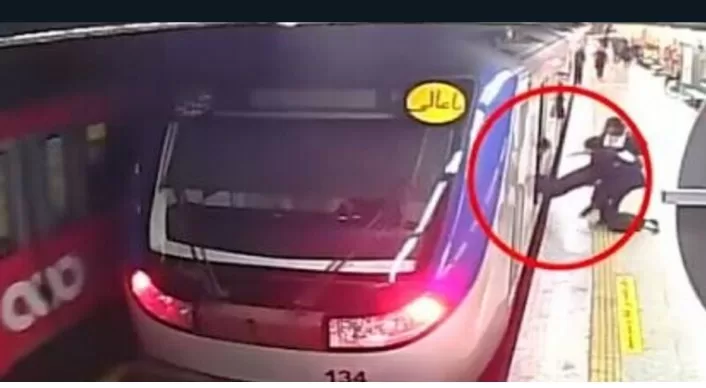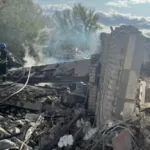Prominent Iranian opposition figures are demanding the release of comprehensive CCTV footage pertaining to a distressing incident in which a 16-year-old girl, Armita Geravand, now in a coma, collapsed after an alleged encounter with hijab enforcement authorities on the Tehran metro.
Armita Geravand remains hospitalized following the incident that unfolded on Sunday. Iranian authorities have disseminated video footage purporting to validate their assertion that Armita’s fainting was due to a drop in blood pressure. However, both witnesses and international human rights groups contend that she collapsed during a confrontation with officials because she was not wearing a hijab.
CCTV footage shared by Iran’s state news agency IRNA depicts Armita, without a hijab, accompanied by two female friends walking toward the metro train from the platform. Inside the carriage, one of the girls is seen suddenly stepping back and reaching for the ground, while another girl is removed unconscious from the cabin by fellow passengers.
Eyewitnesses have provided a different account, alleging that a female hijab enforcer initiated an argument with Armita upon her entry into the carriage due to her lack of a headscarf. “The chador-clad woman screamed at her asking her why she was not covered,” one witness recounted. “Armita then told her, ‘Do I ask you to remove your headscarf? Why are you asking me to wear one?’ Their argument then turned violent. The hijab enforcer started physically attacking Armita and … violently pushed her.”
Another witness claimed that Armita was still conscious when she fell to the ground. Disturbingly, witnesses reported seeing the same hijab enforcer waiting near the ambulance that transported Armita to the hospital.
Notably, Iran’s state news has not released any footage from inside the train itself and has not provided an explanation for withholding it. Many train cars on the Tehran metro are equipped with multiple CCTV cameras, typically accessible to security personnel. Opposition figures contend that the footage displays a significant gap of at least 100 seconds.
Concerns have deepened with reports that Armita’s mother, Shahin Ahmadi, was reportedly arrested on Wednesday, and her whereabouts remain unknown. Iran’s semi-official Tasnim news agency has denied this claim, though it has not been independently verified. If Ahmadi has indeed been detained, it suggests authorities may be apprehensive that she does not endorse the official narrative surrounding her daughter’s incident.
Armita’s case has evoked memories of Mahsa Amini, a 22-year-old woman who fell into a coma while in the custody of morality police last year, sparking nationwide protests. In a troubling parallel to the Amini case, a journalist from the Shargh newspaper who attempted to investigate the incident was briefly detained.
International attention is beginning to focus on this distressing situation. German Foreign Minister Annalena Baerbock expressed her dismay on Twitter, saying, “Once again a young woman in #Iran is fighting for her life. Just because she showed her hair on the subway. It’s unbearable.”
Abram Paley, the U.S. Deputy Special Envoy for Iran, expressed shock at reports of the assault by the so-called “morality police” on Armita. He further criticized the reported arrest of journalist Maryam Lotfi, stating it was an affront to journalistic freedoms.
Iran has recently redeployed its morality police and hijab enforcement agents, intensifying penalties for those who violate the head-covering requirement. Rights groups have raised concerns about security personnel not reporting for duty at the Tehran metro station where Armita was injured, but this has not been independently verified. Currently, Fajr Hospital, where Armita is receiving treatment, is under tight security.
Iran’s Ministry of Education’s security director reportedly visited Armita’s school, warning teachers against sharing news or photos of her on social media. The union for teachers issued a statement, revealing that the security director threatened heavy fines and contract termination for teachers who disseminated such information.
Nasser Kanani, a spokesperson for Iran’s foreign ministry, dismissed western countries’ concerns as “interventionist, biased, and dishonest.” Independent newspapers in Iran have faced increasing censorship, making it challenging to report extensively on the incident. Etemaad, a reformist newspaper, has called on the government to clarify why reporters are encountering obstacles in fulfilling their constitutional duty to seek the truth.
The plight of Iranian women and the encroachment on their rights is drawing global attention, raising questions about the regime’s treatment of its own citizens.




